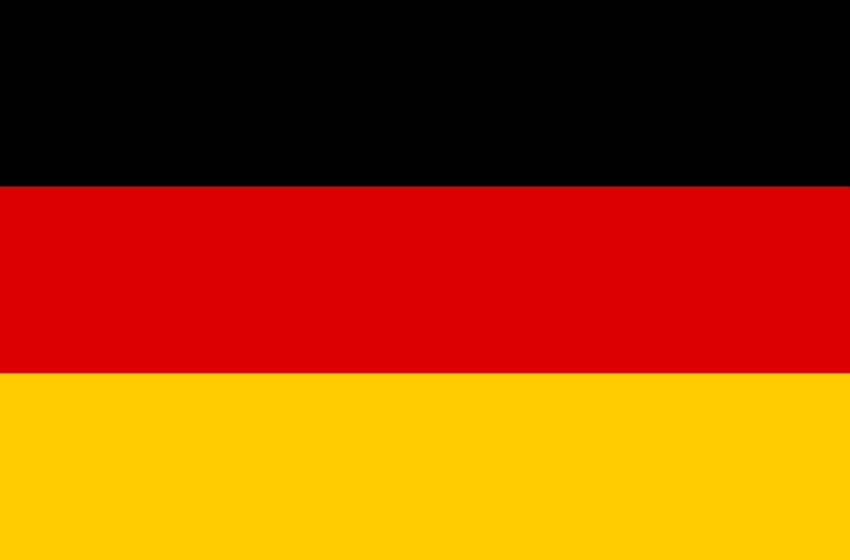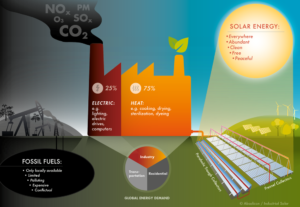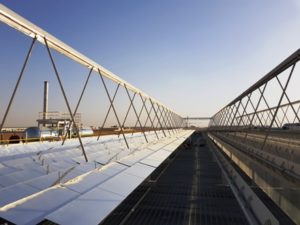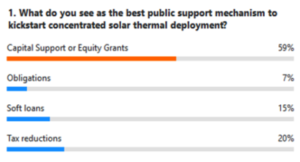Germany: Industrial Solar and Viessmann Work on Standardised Process Steam System
October 4, 2013
Together with the German Aerospace Centre’s Institute of Solar Research, DLR, German companies Industrial Solar and Viessmann are working on a standardised hybrid system based on solar energy and fossil fuel to generate steam for industrial applications. The so-called SolSteam project is being funded by the German Federal Environment Ministry, BMU, and its first milestone is to find a customer for the pilot plant.
The customer should require at least 2 t/h of steam at a pressure between 4 and 25 bar for an industrial application and have roof or ground space to install at least 1,000 m² of solar collectors. The plant size would equal a boiler power of about 1.5 MWth and a solar peak power of about 500 kWth, so solar can supply one third of the peak heat demand. According to Olaf Stoppok from Viessmann, the figures represent a common volume for steam production. Because of the BMU’s funding, a customer located in Germany would be preferred, but an installation in Southern Europe would also be possible.
“One important issue we want to investigate is how the boiler manages changing solar loads, e.g., when there are clouds passing by. To do that, we will need this minimum solar share,” says Christian Zahler, Managing Director of Industrial Solar. “In case the customer runs processes in batch mode, the solar peak power should be within the base load, so that no solar energy will be dumped by automatic defocusing of the primary mirrors of our Fresnel collector.”
Industrial Solar produces a Fresnel collector system with single-axis tracking, concentrating the sunlight on an evacuated absorber tube. Temperatures of up to 400 °C can be achieved with thermal oil as the heat transfer fluid, whereas the majority of customers usually request temperatures between 100 °C and 220 °C for their steam applications.
The aim of the project is to develop a standardised system tested under many different operating conditions. At the same time, the project partners want to reduce the necessary periphery components between the boiler and the collector field, in order to reduce overall system costs.
Ideally, the outcome of the project will be a system which works without a steam separator. This would not only save tens of thousands of Euros in investment costs, but also space and maintenance fees. Today´s typical operation mode for direct solar steam generation is to run the mixture of steam and water from the solar collector through a steam separator. Afterwards, the liquid phase is recirculated through the solar collector, whereas the gaseous component, i.e., the steam, is fed into the steam network of the company.
The shared goal of Viessmann and Industrial Solar is to feed the steam-water mixture directly into the boiler fired by fossil fuels. Besides boiler design adjustments, system control would have to be adapted, too, in order to run the two steam generators simultaneously and in all possible operation modes. “Finally, we want to develop a plug-and-play version, which will be included as a standard product in our normal price list,” says Stoppok. The official project will now run from August 2013 to August 2016. The installation of the pilot plant should take place as early as possible in 2014.
More information:
Industrial Solar: http://www.industrial-solar.de
Viessmann: http://www.viessmann.de
Solar research at the German Aerospace Centre: http://www.dlr.de/sf/
Listen to the 5-minutes interview with Mr Christian Zahler, Managing Director of Industrial Solar:


